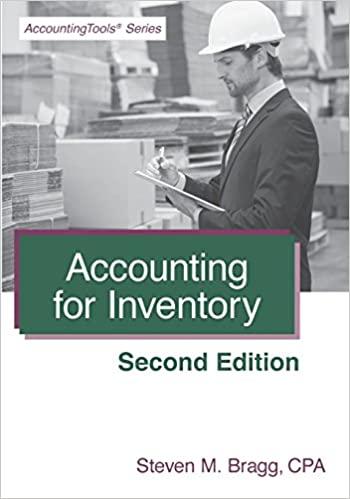Question
In a job-order costing system that is based on machine-hours, which of the following formulas is correct? A) Predetermined overhead rate = Actual manufacturing overhead
In a job-order costing system that is based on machine-hours, which of the following formulas is correct?
A) Predetermined overhead rate = Actual manufacturing overhead Actual machine-hours
B) Predetermined overhead rate = Actual manufacturing overhead Estimated machine-hours
C) Predetermined overhead rate = Estimated manufacturing overhead Estimated machine-hours
D) Predetermined overhead rate = Estimated manufacturing overhead Actual machine-hours
41. Which of the following statements about using a plantwide overhead rate based on direct labor is correct?
A) Using a plantwide overhead rate based on direct labor-hours will ensure that direct labor costs are correctly traced to jobs.
B) Using a plantwide overhead rate based on direct labor costs will ensure that direct labor costs will be correctly traced to jobs.
C) It is often overly simplistic and incorrect to assume that direct labor-hours is a company's only manufacturing overhead cost driver.
D) The labor theory of value ensures that using a plantwide overhead rate based on direct labor will do a reasonably good job of assigning overhead costs to jobs.
42. When preparing a direct materials budget, the required purchases of raw materials in units equals:
A) raw materials needed to meet the production schedule + desired ending inventory of raw materials beginning inventory of raw materials.
B) raw materials needed to meet the production schedule desired ending inventory of raw materials beginning inventory of raw materials.
C) raw materials needed to meet the production schedule desired ending inventory of raw materials + beginning inventory of raw materials.
D) raw materials needed to meet the production schedule + desired ending inventory of raw materials + beginning inventory of raw materials.
43. All of Gaylord Corporation's sales are on account. Thirty-five percent of the sales on account are collected in the month of sale, 45% in the month following sale, and the remainder are collected in the second month following sale. The following are budgeted sales data for the company:
|
| January | February | March | April |
|
|
|
|
|
|
| Total sales | $50,000 | $60,000 | $40,000 | $30,000 |
What is the amount of cash that should be collected in March?
A) $24,000
B) $37,000
C) $41,000
D) $51,000
44. Which of the following statements is NOT correct concerning the Manufacturing Overhead Budget?
A) The Manufacturing Overhead Budget provides a schedule of all costs of production other than direct materials and labor costs.
B) The Manufacturing Overhead Budget shows only the variable portion of manufacturing overhead.
C) The Manufacturing Overhead Budget shows the expected cash disbursements for manufacturing overhead.
D) The Manufacturing Overhead Budget is prepared after the Sales Budget.
45. Assuming that direct labor is a variable cost, the primary difference between the absorption and variable costing is that:
A) variable costing treats only direct materials and direct labor as product cost while absorption costing treats direct materials, direct labor, and the variable portion of manufacturing overhead as product costs.
B) variable costing treats direct materials, direct labor, the variable portion of manufacturing overhead, and an allocated portion of fixed manufacturing overhead as product costs while absorption costing treats only direct materials, direct labor, and the variable portion of manufacturing overhead as product costs.
C) variable costing treats only direct materials, direct labor, the variable portion of manufacturing overhead, and the variable portion of selling and administrative expenses as product cost while absorption costing treats direct materials, direct labor, the variable portion of manufacturing overhead, and an allocated portion of fixed manufacturing overhead as product costs.
D) variable costing treats only direct materials, direct labor, and the variable portion of manufacturing overhead as product costs while absorption costing treats direct materials, direct labor, the variable portion of manufacturing overhead, and an allocated portion of fixed manufacturing overhead as product costs.
Step by Step Solution
There are 3 Steps involved in it
Step: 1

Get Instant Access to Expert-Tailored Solutions
See step-by-step solutions with expert insights and AI powered tools for academic success
Step: 2

Step: 3

Ace Your Homework with AI
Get the answers you need in no time with our AI-driven, step-by-step assistance
Get Started


